Jennifer Bhatnagar and Zoey Werbin featured in the Brink
|
|
|
Dr. Jennifer Bhatnagar and PhD student, Zoey Werbin, were recently featured in The Brink’s article, “Why Scientists Want to Solve an underground Mystery about Where Microbes Live.” The Brink interviewed Dr. Bhatnagar about her research. Dr. Bhatnagar and her colleagues took on the challenge of understanding the soil microbiome, consisting of various microbe communities.
An excerpt from The Brink article:
“If we know where organisms are on earth, and we know how they change through space and time due to different environmental forces, and something about what different species are doing, then we can much better predict how the function of these communities will change in terms of carbon and nutrient cycling,” Bhatnagar says. That kind of knowledge would have huge implications for agriculture, climate change, and public health.”
Read the full article here. Congratulations to Dr. Bhatnagar, Zoey, and their colleagues on this article.
Legacy of Thomas Kunz Featured in University of Chicago Press Journals
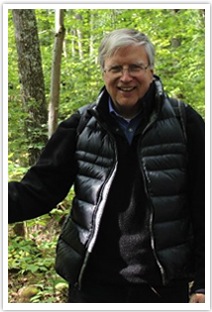
During the COVID-19 pandemic, most of us have come to the realization that the most meaningful aspects of our careers are the connections we make and the positive impact we have on others. Dr. Thomas H. Kunz, a highly respected biology professor at Boston University, was a commendable example of a biologist that has made significant contributions to the scientific community and as well as being a great leader for his students and coworkers.
To learn more about the major highlights of Dr. Thomas Kunz’s life and career, we encourage you to read this article from the University of Chicago written by former students. You can also contribute to the Thomas H. Kunz Fund which supports graduate students in BU’s Biology Department.
Bio & BUMP Alum, Krishna Sharma, Publishes on Florida Corals in Miami Herald
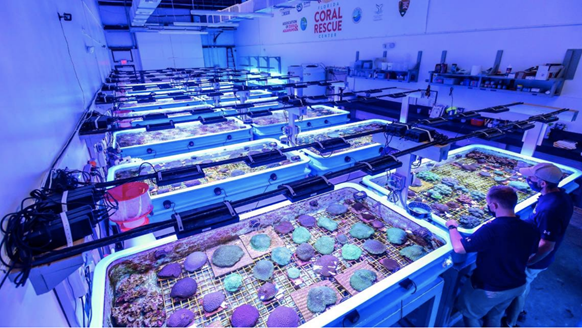
Congrats to Krishna Sharma (CAS ‘17) who published a recent story in the Miami Herald on Florida’s reefs. Krishna is an alum of the Biology Department and the Marine Program at BU.
In 2014, Stony Coral Tissue Loss Disease caused one of the worst marine epidemics ever witnessed; in particular, the Southern Florida coral reefs have taken a hit. This disease has produced an unprecedented national research and rescue effort, in which 2,000 corals have been removed from Florida’s waters and isolated in aquariums around the nation. The Association of Zoos and Aquariums (AZA), a non-profit organization serving aquariums throughout the country, has rallied a network of over 20 sites to muster efforts for coral reef preservation.
A unique partnership between Disney, SeaWorld, and AZA to save Florida’s devastated reefs had led to the purchase of a large coral storage facility which had later become the Florida Rescue Center (FCRC). Universities such as the University of South Florida, University of Miami, and Nova Southeastern have produced disease-fighting bacteria as a probiotic line of disease. Scientists referred to Florida’s Newfound Harbor for resilient coral genes in attempts to breed a new generation. At this harbor, corals have been planted and screened for climate change resilient traits since 2015. This stock of coral has even survived multiple harsh events such as a bleaching event, a category four hurricane, and resilience against the stony coral disease.
Our own Dr. Les Kaufman stated for the article, “Sometimes this is mistakenly thought of as re-engineering a reef, but that is rarely the case.”
The heat and disease-resistant corals are not genetically modified like GMO crops but selectively bred for favorable phenotypes.
For further information, you can read Krishna’s full article here.
New Professor At the New NSF Science and Technology Center: Daniel Segrè
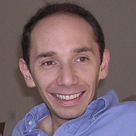
We are pleased to announce that Daniel Segrè, Professor of Biology, Bioinformatics, and Biomedical Engineering is part of the new science & technology center funded by the National Science Foundation (NSF). Dr. Segrè is one of the faculty members of the Center for Chemical Currencies of a Microbial Planet (C-CoMP) team responsible for computational modeling of marine microbial communities. The Center aims to:
“Integrate research, education, and knowledge transfer activities and support interdisciplinary science teams to close knowledge gaps in the identities and dynamics of molecules that serve as the ‘currencies’ of elemental transfer within marine microbial communities and between the ocean and atmosphere.”
Click here to learn more about the new NSF center.
Congratulations, Daniel!
Ana Fiszbein Receives MLSC Grant
Ana Fiszbein recently received a Massachusetts Life Science Center (MLSC) grant. Her proposal is titled, “Elucidating the role of G9a alternative splicing in breast cancer to develop novel targeted therapies.”
From Dr. Fiszbein:
“Our goal is to elucidate the roles of G9a alternative splicing in breast cancer, and breast cancer recurrences, and develop novel targeted therapies based on antisense oligonucleotides to inhibit tumor growth with lower toxicity. We plan to use a combination of high-throughput, functional genomics, and molecular approaches to explore key aspects of G9a-targeted anti-cancer therapies.”
Congratulations, Ana!
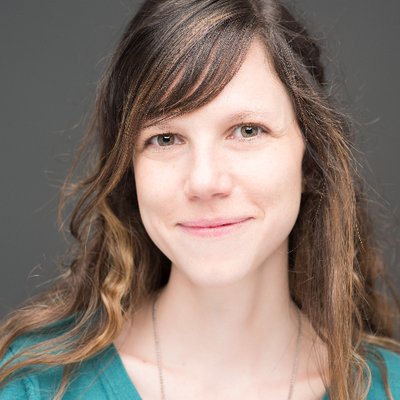
New Innovation Career Development Professor: Ana Fiszbein
We are excited to announce that Ana Fizbein was recently selected as an Innovation Career Development Professor at BU. This award recognizes junior faculty whose translational research is likely to lead to future licensed technology. Dr. Fiszbein is recognized for her use of system biology and bioinformatics to study the mechanisms of mammalian gene regulation to understand how gene architecture determines the dynamic regulation of gene expression in normal cells and disease well as her translation research with the implication of targeted cancer therapies.
Congratulations, Ana!

Joe Larkin Receives 2021 MIRA
Dr. Joe Larkin received the 2021 Maximizing Investigators’ Research Award (MIRA) to understand how multicellular behaviors emerge in bacterial colonies. His lab investigates how single-cell-level gene regulation of bacterium Bacillus subtilis and the physics of the local environment conspire to create cell-to-cell signaling networks and patterns of cell types that allow colonies to divide labor.
The MIRA supports research in an investigator’s laboratory that increases the understanding of biological processes and lays the foundation for advances in disease diagnosis, treatment, and prevention. Dr. Larkin’s MIRA proposal contained two thrusts: 1) Understanding how ion channels of bacteria cells create cell-to-cell signaling networks and how membrane potential impacts cell physiology and gene expression; 2) Investigating how stereotyped spatial patterns of motile and matrix-produced cells emerge in bacterial biofilms. Dr. Larkin and his team hypothesized that these patterns form due to the inheritance of gene expression state as cells divide and mechanical interactions of different cell types during biofilm growth.
The first thrust was an extension of Dr. Larkin’s postdoctoral work investigating how bacterial cells propagate electro-chemical signals within their communities. The second thrust came from work that members of his lab did during their first year. His team created a computational model that predicted patterns of cell types in biofilms based on phenotype inheritance and mechanical interactions.
Congratulations, Joe!

Maia Archer Recipient of 2021 Health Humanities Undergraduate Summer Fellowship
Maia Archer, an undergraduate Neurobiology student, was selected as the recipient of a Health Humanities Undergraduate Summer Fellowship. For this internship, Maia explored the cross-disciplinary approach to health, healthcare, and medicine, took different perspectives (cultural, historical, social, etc.), and investigated how language could be used to improve the relationship between health and our society. In her project titled, “Efficiency vs. Equity: Should Language Matter?” How the Prioritization of English in the Scientific Literary Community Adversely Affects Francophone African Countries,” she analyzes how the cultural and linguistic implications and complexities of various societies and communities impact health and how it is discussed within the scientific community.
The dominance of English-written scientific and medical literature results in a limited understanding and application of research around the world. Her research project discusses the importance of diversifying and decolonizing scientific literature, focusing primarily on Francophone African countries. Maia presents a historical analysis of how language limitation in literature and research is linked to the disproportionate burden in healthcare within these African regions. Maia states,
“My ultimate goal for my project is to generate conversation on the dissemination and application of scientific knowledge across the world.”
Congratulations, Maia!
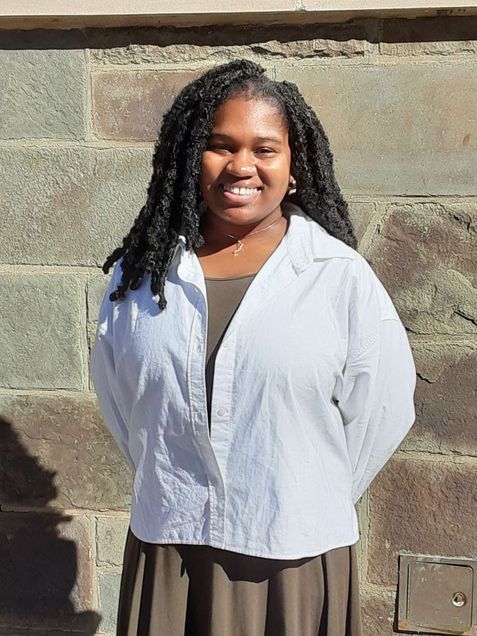
Karen Warkentin gives Plenary Talk with the Smithsonian Tropical Research Institute
In Karen Warkentin’s “Crossing boundaries, disrupting binaries: A queer perspective on studying behavioral diversity,” she discusses her research at the Smithsonian Tropical Research Institute. Her studies focus on how gender and sexuality influence diversity in biology. She recognizes how the routine assumption of heterosexuality has turned a blind eye to variation or queer explanations. She emphasizes how heteronormativity has naturalized, unquestioned, and unexamined.
You can watch the video here.
Jennifer Bhatnagar Featured in the Brink
Dr. Jennifer Bhatnagar was recently featured in The Brink’s article, “Why Scientists Want to Solve an underground Mystery about Where Microbes Live.” The Brink interviewed Dr. Bhatnagar about her research. Dr. Bhatnagar and her colleagues took on the challenge of understanding the soil microbiome, consisting of various microbe communities.
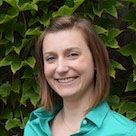
An excerpt of The Brink article:
“If we know where organisms are on earth, and we know how they change through space and time due to different environmental forces, and something about what different species are doing, then we can much better predict how the function of these communities will change in terms of carbon and nutrient cycling,” Bhatnagar says. That kind of knowledge would have huge implications for agriculture, climate change, and public health.”
Read the full article here.
